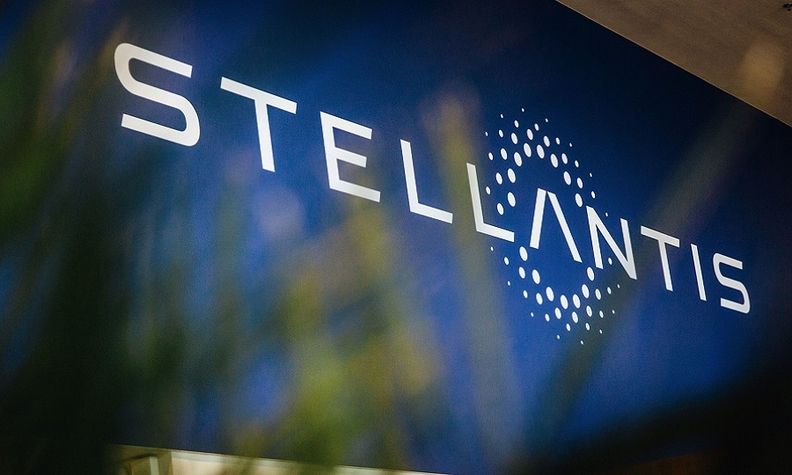Long-term strategy high on agenda
as industry professionals gather in Prague for annual
convention
Jason T Hesse and Fred
Crawley
Asset finance and leasing professionals
from across Europe gathered in Prague in early October for
Leaseurope’s annual convention, where long-term strategy was high
on the agenda for the motor finance industry.
In contrast to 2008’s Madrid event, held
immediately in the wake of the Lehman collapse, the focus this time
around was very much on predicting the shape of the industry over
the next five years.
In response to a poll at the start of the academic
programme, one-third of delegates said they did not expect the
market to return to pre-recession conditions until mid-2011 at the
earliest; while 26 percent thought this would not happen until 2012
or beyond. Only 19 percent of attendees expected the market to
return to “normal” by the end of 2010.
Despite a shorter programme than usual – to reflect
the difficult economic situation – the annual convention was very
well attended, with over 300 industry figures present.
How well do you really know your competitors?
Access the most comprehensive Company Profiles on the market, powered by GlobalData. Save hours of research. Gain competitive edge.

Thank you!
Your download email will arrive shortly
Not ready to buy yet? Download a free sample
We are confident about the unique quality of our Company Profiles. However, we want you to make the most beneficial decision for your business, so we offer a free sample that you can download by submitting the below form
By GlobalDataAmong them was Piero Biagi, managing director of
Italian leasing company Nolè and chairman of Leaseurope’s
statistics and marketing committee. Biagi introduced the
newly-launched European Car Leasing and Rental Report, published in
association with strategic management consultancy AT Kearney.
Motor finance companies attending the seminar were
presented with key trends in the automotive industry, which also
identified some of the mid-term challenges and opportunities for
the car leasing and rental sector.
“Clearly, car leasing and rental firms are facing a
difficult environment,” said Biagi, one of the report’s
authors.
“Customer behaviour is changing, the supply side is
becoming increasingly complex, and automotive-related businesses
are generally perceived as being more ‘risky’ than in the past.
“But there are still many opportunities out there
for the sector.”
Indeed, the seminar highlighted four main market
opportunities for car leasing and rental firms (see box,
right).
According to the seminar leaders – which included
high-profile speakers from LeasePlan, Hertz, Volkswagen Financial
Services and Arval – the industry is faced with some important
challenges, too: low growth, a substitution-driven market, high
manufacturer concentration, geographical enlargement, eco-friendly
vehicle boom, product portfolio fragmentation, brand proliferation
and market segment polarisation.
“These existing and emerging trends could lead to a
reshaping and rethinking of the current car leasing and rental
business model,” said one participant.
“[The trends] must be carefully considered and
integrated into the development of any leasing or rental strategy
over the next two to three years.”
Later in the convention’s programming, ALD
Automotive CEO Gianluca Soma gave his own company’s forward-looking
observations, in his presentation, “A strategic vision for
operational leasing business”.
The presentation began with a snapshot of the
current market, with metrics showing a long-awaited (if fragile)
increase in new orders and deliveries as of May this year, along
with a flattening of the decrease in used car sale prices.
Corresponding to this was a drop from the second quarter’s peak in
contract extension rates.
In a SWOT analysis of the industry, exposure to
residual values and the capital-intensive nature of the business
were marked as weaknesses, mitigated by the cost benefits driven by
increasing use of outsourcing, and by the global reach and
economies of scale achieved by many companies.
Funding cost volatility, new IFRS rules, demand for
used cars and government-led environmental tax policies were
identified as threats.
In Soma’s opinion, mature economies will be
unlikely to see operating leasing grow until 2012, and even then
will only experience single digit growth rates.
The Brazil, Russia, India and China (BRIC)
countries, by contrast, were highlighted as a major opportunity,
with greater proliferation of new vehicle offerings and quicker
recovery in used car markets expected to lead to single digit
growth by 2011, and double digit-growth soon afterwards (see
box, below).
Market opportunities – BRIC countries to
lead way
|
Mature countries |
BRIC region & emerging |
|
|
2010 |
• Leasing market still shrinking • Concentration of players, • Used car market improving • Car mix evolving, gradually |
• Leasing market recovering • Credit risk alert • New vehicle offerings on • Used car market recovering |
|
2011 |
• Leasing market stabilising • Return to profitability • Used car market stabilising • New market segments |
• Leasing market growth • Product offering adaptation • China: anticipation of new |
|
2012-2015 |
• Leasing market back to • Right level of profitability vs • Significant evolution of • Consumer market growth |
• Double-digit growth • Used car market structuring |
|
Source: Leaseurope, ALD |
||
Market opportunities
Leasing/rental well positioned to
meet client demand
As businesses are strapped for cash, the demand for all financing,
leasing and rental products is likely to increase. Leasing and
rental firms are well-placed to benefit from this situation
compared to traditional lenders
Providing solutions addressing
customers’ call for flexibility
Variable contract terms; adaptive fleet compositions; innovative
transport solutions; tools allowing clients to manage their fleets
in a cost-effective way
Leveraging growth
opportunities
The penetration of leasing/rental products still remains relatively
low in some geographical markets and customer segments
Development of
partnerships
By building partnerships where each party leverages its own
expertise, leasing and rental firms can create innovative
go-to-market channels
Source: Leaseurope, AT Kearney







